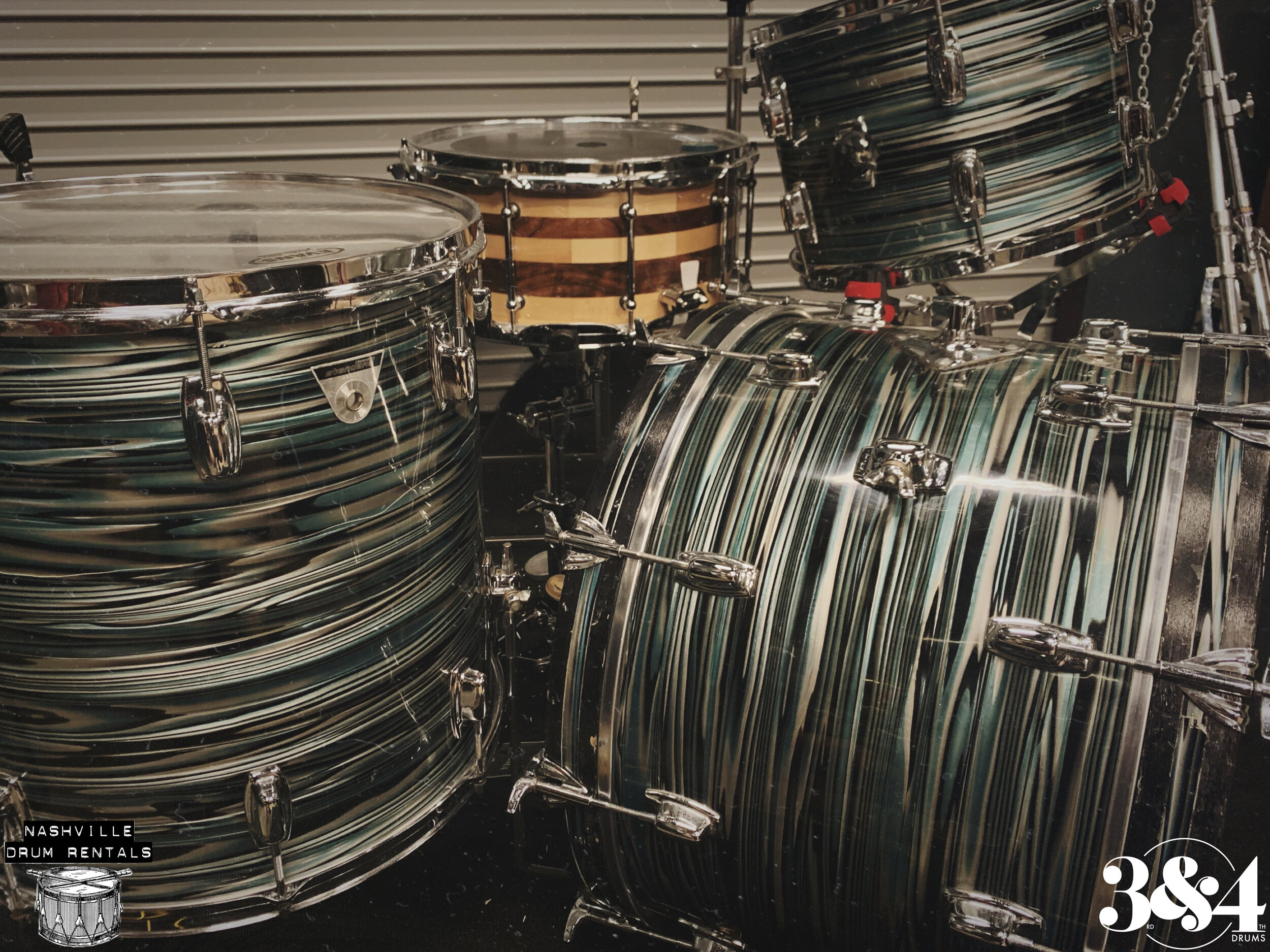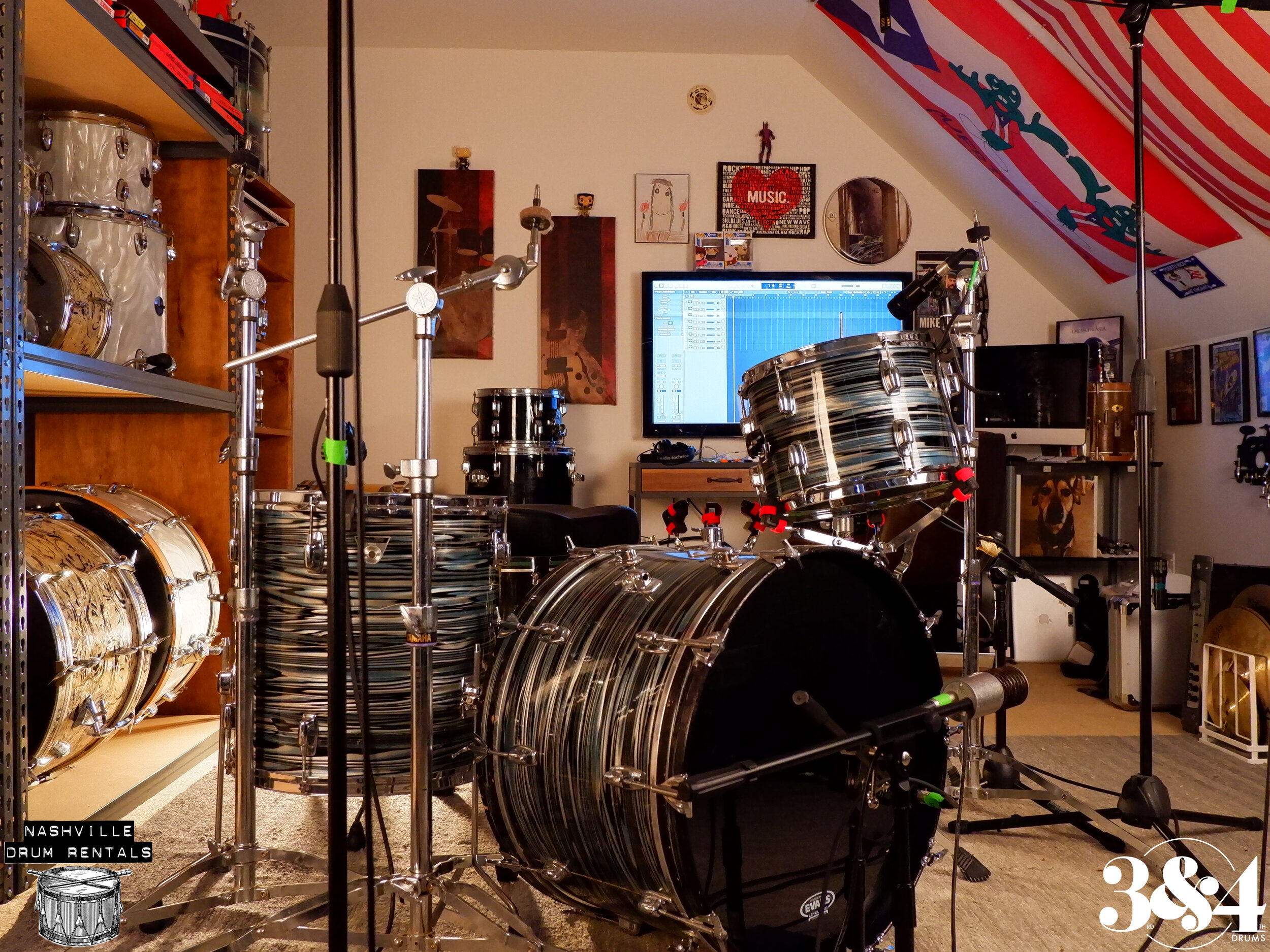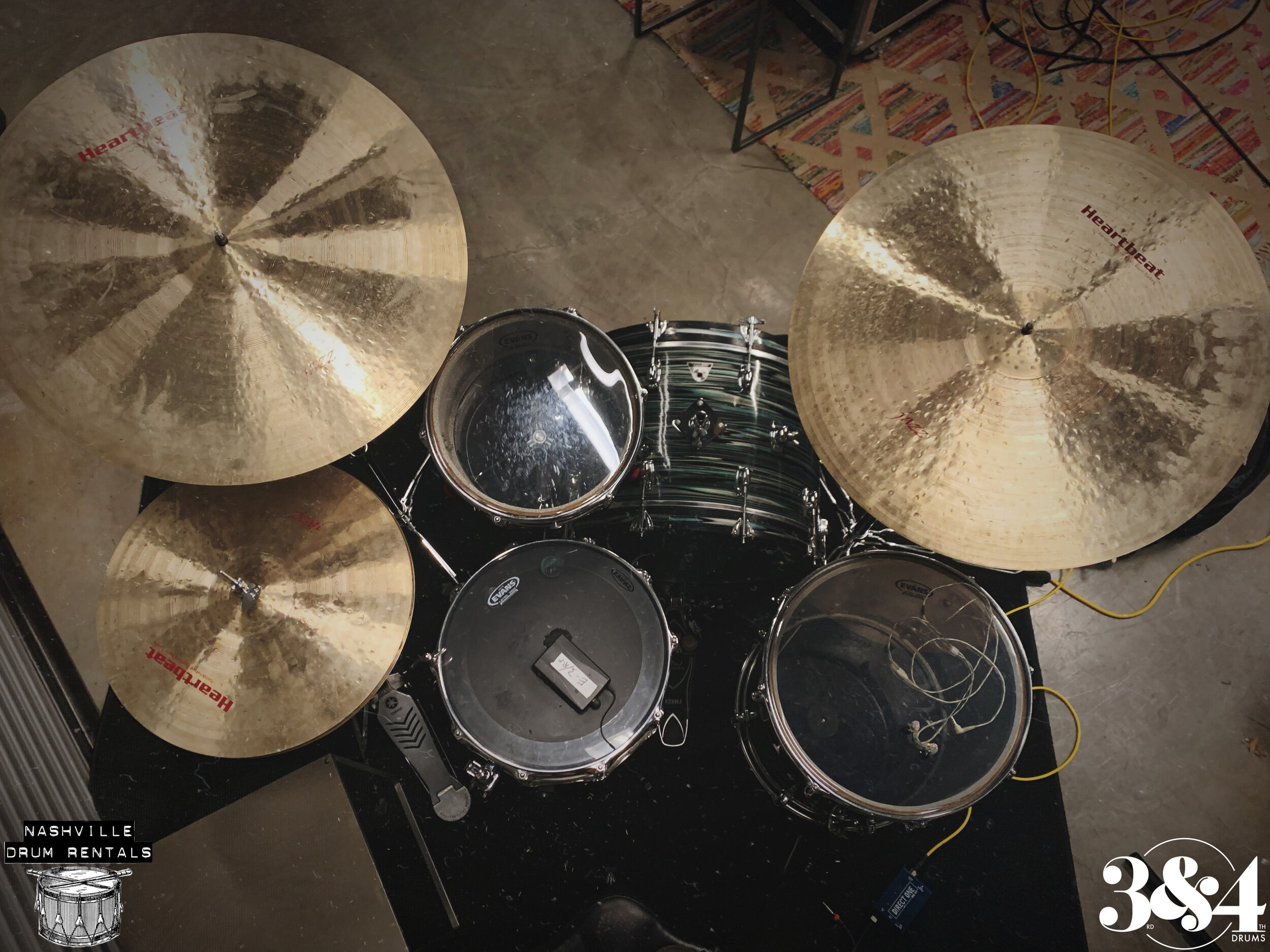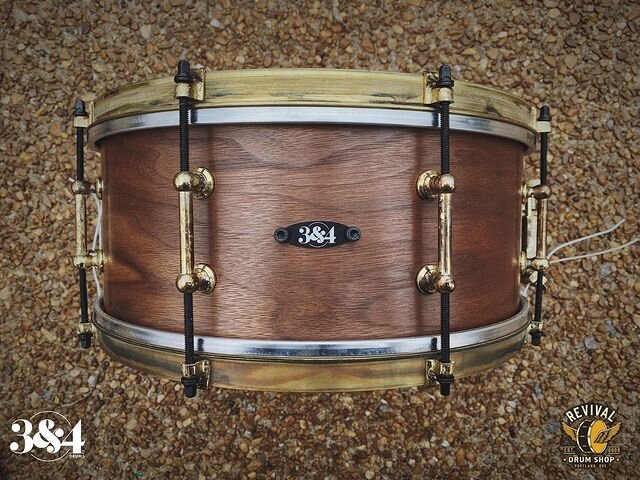1971 Ludwig Standard in Blue Strata



You can thank the flood of Made in Japan kits being imported into the states that led Ludwig to create the Standard line.
First introduced in 1968, the “Standard” line was Ludwig’s answer to lower-priced drums being produced by Pearl, Tama and Yamaha. These shells were constructed from the same mold as the classic lines prior. Some speculate these shells were “B stock” (blemishes in wood grain) because this was the only line to have the interior shell sprayed with their exclusive granitone acoustical coating. What kept this USA-made line of drum kits at a price young drummers could afford was the cost-effective hardware, starting from lugs and badges to hi-hat stands and bass drum pedals.
No drummer can deny that Made in Japan drums had some of the most eye-catching wraps on the market. This is why Ludwig created 15 unique wraps that had that M.I.J. mojo—most notably, the strata wraps.
Nashville drummer, Johnny Richeson, playing a Ludwig Standard (13/16/22) & 3rd & 4th Drum Co. 5x14 aluminum snare.
This Ludwig Standard S-320 is dressed in blue strata. Sizes are 9x13, 16x16 and 14x22. Shell construction is the classic 3-ply maple/poplar/maple with maple re-rings. The snare paired with this kit is our 3rd & 4th Drum Co. 5x14 aluminum snare. The kit is equipped with Evans clear G2 on toms & a clear EQ4 on the bass drum. The snare has a coated G2.
This kit is available to rent through Nashville Drum Rentals.

